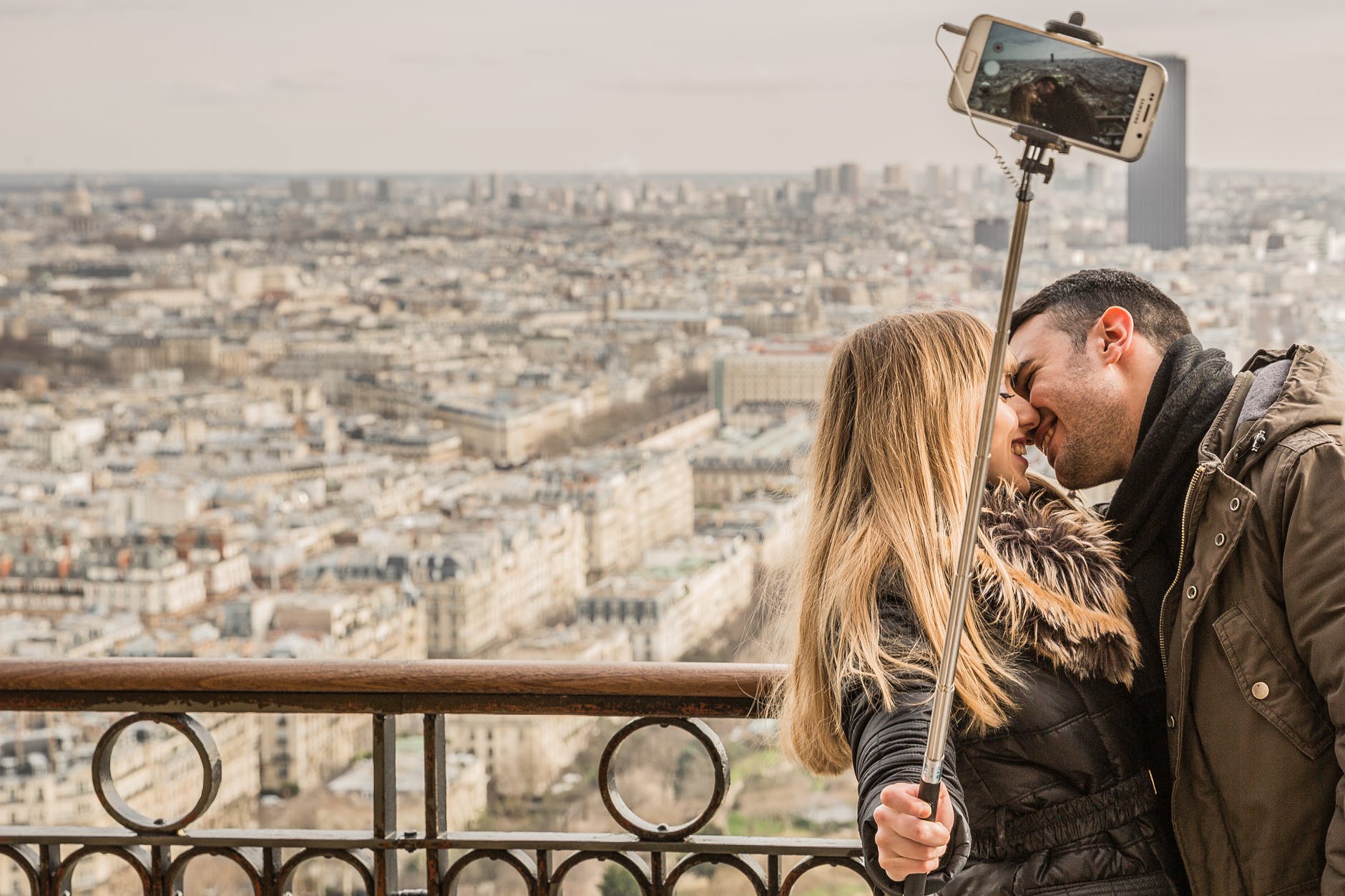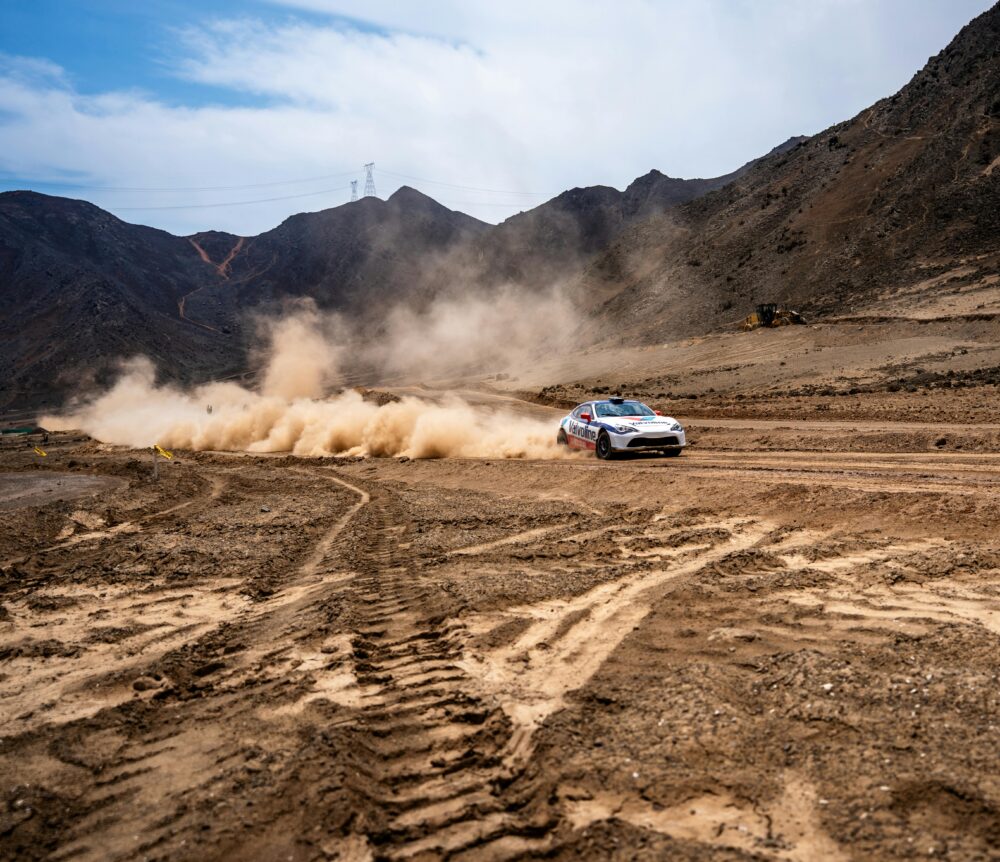
Photo by James Frid on <a href="https://www.pexels.com/photo/man-kissing-woman-holding-selfie-stick-901944/" rel="nofollow">Pexels.com</a>
Blurry images, strange angles, fuzzy dots, and darkness. Not what you want for Instagram when visiting exciting destinations. But don’t worry because you can take magazine worthy holiday photos with your phone using some minor adjustments and a few extras.
Buy a Specialized Camera App
First of all, not all phone camera apps are made equal. In fact, the one that comes with your phone usually isn’t anywhere near adequate for taking great images. Fortunately, phone apps aren’t expensive, and you can get incredible ones from your provider’s app store. So whether you are snapping your beautiful new bride under an exotic waterfall or your dad eating a burger outside your RV rentals, you can take a winning shot. Some of the best camera apps for modern Android smartphones include Google Camera, Camera MX, and Bacon Camera.
Get a Photo Lens Add-On
It has to be said that the lens inside your camera phone is probably poor. That’s because the camera function is secondary to everything else your phone does. So the manufacturer doesn’t take it into consideration as much as other features. Additionally, good lenses are expensive. There are some exceptions with excellent lenses, like Google Pixel phones, but they’re not the rule. However, you can buy a professional-grade camera lens for your phone. An attachable lens lets you take images with far superior quality in lower light with zooming features.
Increase the Resolution for Magazine Worthy Holiday Photos
You might think your phone’s camera app is set up for taking the best images possible. But it is far from that. The default settings of your camera app are designed for ease of use and to save storage space. So it isn’t configured for the best image quality. So one of the first things you need to do is increase the resolution. This is the number of pixels in your image. The higher the pixel count, the better the image quality. You should set this number to at least 1920 x 1080. But go higher if you can. But remember that higher-quality images take up more storage space.
Use the Sun as a Source of Free Lighting
The most important thing in photography is your use of lighting. The word literally means that. While you can get some excellent mobile lighting rigs these days for a small price, the last thing you want is to lug around lights when on holiday. However, there is a massive free light in the sky above you. Using the sun as a free lighting source is an age-old photography trick. Angling your subject towards the light will create an even lighting effect which is excellent for most images. But you can also position the sun behind your subject for moody silhouettes.
Learn About High Dynamic Range
HDR is an old photography trick for capturing all of the available light information in an image. It works by taking several pictures under, standard, and overexposed, then merging them. Your phone can do it automatically, but here are some professional photography tips for good HDR:
- Use a tripod for your shots to reduce blur.
- Take images in various lighting conditions.
- Use a lower ISO setting (if you can) to reduce noise.
- Take multiple brackets of exposure rather than the standard three.
- Always be patient for the perfect shot.
Depending on your phone camera’s abilities and your app settings, you may or may not be able to take good quality HDR shots. However, high-end digital image software can apply HDR to standard images when you edit them later on.
Don’t Use Digital Zoom if You Don’t Have a Lens
Photographs taken with phone cameras are notoriously grainy. One of the main reasons is the improper use of zooming. Almost all camera lenses are fixed, meaning they cannot zoom like a DSLR. To fix this, they use digital zoom that mimics the zoom of an objective lens using the software. However, the further you zoom, the more noise you add to the image. Additionally, the software cannot process the picture as well. If you have a lens attachment, then always use it. If not, then get closer to your subject rather than using digital zoom, but be aware of the angle.
Consider the Orientation of Your Image
Most people ignore orientation and just shoot with what feels natural in their hands. But different subjects require different orientations. For example, a beautiful oceanic shot is wasted with a portrait because there is limited range. Conversely, taking an image of your partner at a touristy overlook would capture too much like people you don’t know or a parked vehicle. You should consider orientation based on the subject of the image. It’s hard to focus someone’s attention on a blooming flower when there’s a stranger’s foot just to the right.
Two cats taking a selfie – Image Courtesy of Pixabay
Get a Selfie Stick for Magazine Worthy Holiday Photos
A fun fact you may not know is that more than 90 million selfies are taken each day. One of the main reasons selfies became popular is the “selfie stick.” People generally use them for taking wide-angle shots, and they are great for steadying yourself. If you don’t have a tripod, then always use your selfie stick for better stability when taking a shot. Selfie sticks allow you to steady your arm. But as well as using them for wider shots, you can also use selfie sticks to get closer. So they’re great for when a lens isn’t available rather than using digital zoom.
Buy a Professional Editing App
Buying a better camera app is always recommended. They come with tons more features and even allow some on-the-fly editing. But you also need a professional app for further editing if you want pictures that make the grade. Fortunately, editing suites aren’t expensive for your phone, like camera apps. And you can even get Adobe Photoshop Express for free. Professional editing apps offer more advanced features than simple filters. Pro tools let you play with levels, exposure, and layers. But they can also compress images to save space.
Summary
To get professional-looking shots with your phone, buy a better camera app and turn up the resolution. Then get a lens attachment. If you don’t have a lens, use a selfie stick to get closer rather than a digital zoom. And use the sun as a free source of lighting when taking shots.


